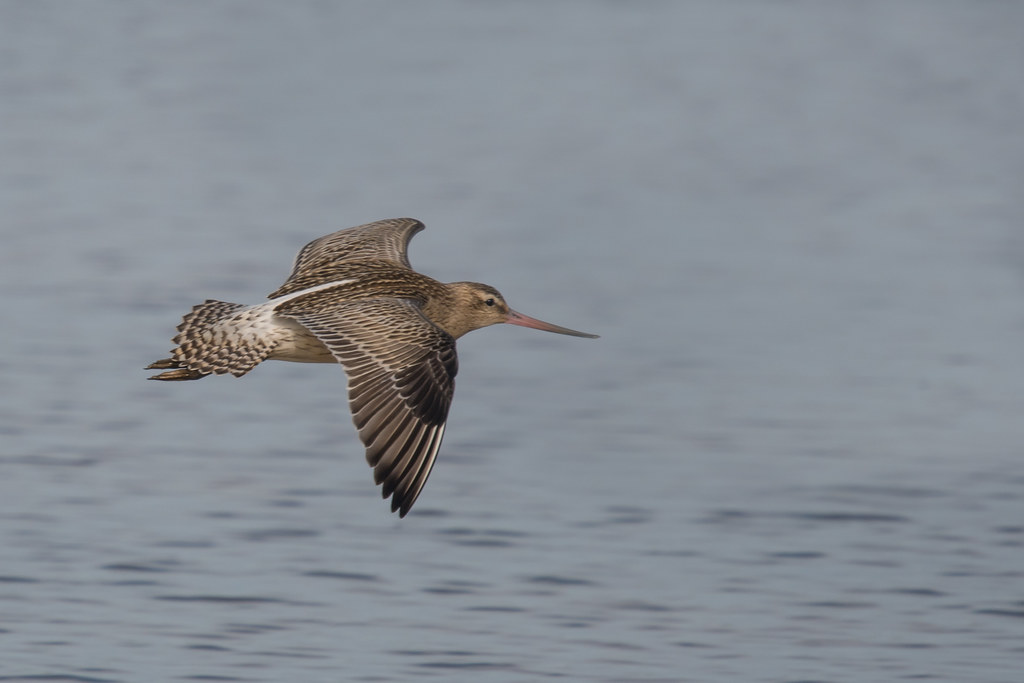
Tim writes: the two British Godwits are easy to tell apart if you see them in flight. Black-tailed Godwit has a black tail and a huge white wing stripe whereas this Bar-tailed Godwit has a barred tail and no wing stripe, rather like a Curlew. The names of both of these birds were coined in 1828 by John Fleming in his History of British Animals. Prior to that Bar-tailed was known as the Common Godwit (or simply Godwit). while Black-tailed was unhelpfully called “the second sort of Godwit” by Ray (1678) then later Red or Red-breasted Godwit in the mid eighteenth century. That wasn’t very helpful as both species are red in breeding plumage.
Bar-tailed Godwits are common on sandy estuaries in winter but not common at all away from their regular coastal sites. The British population is about 50,000 in winter, but they have never bred in Britain. They breed on Arctic tundra adjacent to the Arctic Ocean from Lapland right across to Alaska but these eastern populations do not winter in Britain. Those from eastern Siberia winter in West Africa but stop off to refuel in Britain on their way back north in May. The ones from Alaska winter in New Zealand but they make the 11,000km journey without stopping and it takes them about 7 days to complete. These photographs were taken on the Humber Estuary in September.

wow – 11,000 km non-stop. Isn’t nature amazing.
According to the Rev Charles Swainson in ‘Provincial Names of British Birds’ (1885) the name godwit comes from Anglo Saxon ‘God’ (= good) and ‘Wihta’ (= an animal) and reflects the fact that it was esteemed eating. He quotes Sir Thomas Browne, the 17th century scholar, describing them them as ‘the daintiest dish in England’.